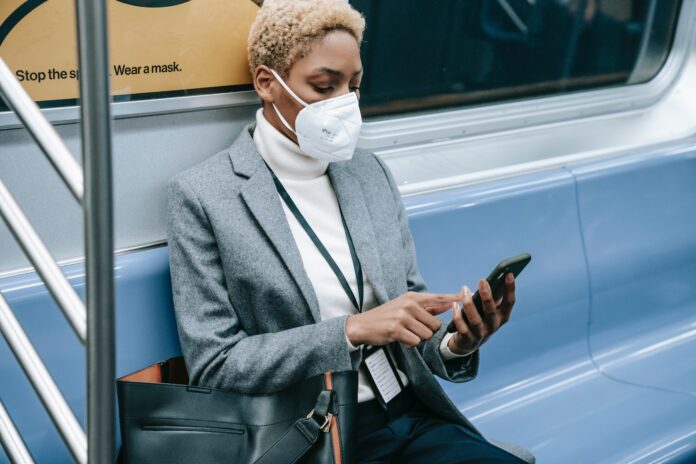
By Ariama C. Long, New York Amsterdam News, Word in Black
Transit advocates and riders gathered this week to call on Governor Kathy Hochul and the New York State Legislature to fully fund the Metropolitan Transportation Authority (MTA) in state budget proposals. They said more frequent service and shorter wait times are the best ways to achieve transit equity.
Millions of commuters depend on trains and buses as their primary method of transportation for daily commutes. Rehabilitating the MTA to serve them, especially since the devastating effects of the pandemic, has been a hot topic.
“From the Financial District to Far Rockaway, New Yorkers deserve a public transit system that works for everyone,” said Councilmember Selvena N. Brooks-Powers, who chairs the Committee on Transportation and Infrastructure. “We call on the state to provide the MTA the short- and long-term funding to ensure frequent, reliable service citywide, including to underserved outer borough communities. Reliable and timely service is critical as we work to restore and build the confidence for the in-person workforce.”
A #6MinuteService Goal
Danny Pearlstein, director of policy and communications at Riders Alliance, has long advocated for the #6minuteservice goal, meaning that the first issue is for trains and buses to run more frequently and on time. A greater proportion of commuters still has to deal with infrequent service because of shifts in work patterns and many people still working from home, Pearlstein said.
“The governor’s budget proposes maintaining existing service levels by keeping the MTA afloat as federal pandemic aid runs out,” said Pearlstein. “We believe that to put the MTA’s fiscal house in order, they actually need to provide better service than before the pandemic and compete harder for riders.”
We call on the state to provide the MTA the short- and long-term funding to ensure frequent, reliable service citywide, including to underserved outer borough communities. Reliable and timely service is critical as we work to restore and build the confidence for the in-person workforce.
SELVENA N. BROOKS-POWERS, NEW YORK CITY COUNCILMEMBER
Pearlstein said more frequent service would also help maintain public safety because commuters won’t be waiting on the platform and vulnerable for long periods of time. His group is asking for $300 million and up in the state budget to funnel money into MTA payroll, energy, fuel, electricity, etc.
“When the transit system you depend on fails you, it is a direct reflection on how our state’s budget priorities are not meeting the needs of everyday New Yorkers,” said Councilmember Amanda Farías. “Six-minute service is about streamlining our city for the benefit of our local communities and tourists alike. For outer-borough communities like mine, who rely on our trains and buses to get us to and from work, school, healthcare appointments, and citywide recreation, public transit is an essential service.”
Fair Fares
Transit groups are supporting investments in more frequent service and expansion of the Fair Fares program, which gives half-priced Metro cards to riders who make up to 200% below the federal poverty level.
“A big priority for us is to remove barriers to transportation access,” said Elizabeth Adams, senior director of advocacy and organizing at Transportation Alternatives. “We want to do as much as we can to encourage people to take public transit and for everyone to afford public transportation because it’s more sustainable. We shouldn’t be punishing people because of their income status.”
Last year, Transportation Alternatives and the Massachusetts Institute of Technology (MIT) released the Spatial Equity NYC report, which used the city’s Open Data to show how different boroughs, council districts, and demographics are disproportionately affected by the effects of traffic-caused health issues, traffic violence, and poor service.
“When we talk about transit deserts—who’s prioritized in our city and who is not, we see real disparities around places like southeast Queens, where there’s very little transit access. They have extreme heat and little tree coverage and really harsh concrete infrastructure, so all of those things overlap,” said Adams. “When we have more walkable neighborhoods and green space, it improves access, public health, and environmental well-being.”
The report found that there are higher numbers of residents of color in 10 city council districts, 64% fewer streets with protected bike lanes, 49% fewer streets with bus lanes, and 51% higher asthma rates. In the “top five” city council districts, which have the most streets with bus lanes, 58% of residents are white. In districts where more than 10% of streets have a bus lane, 70% of residents are white.
State Senate Action
As of this Tuesday, the Senate rejected the MTA’s “proposed biennial fare hikes” in 2023 and 2025, as well as Hochul’s proposal to raise money through a payroll tax. The Senate countered with an increase in a corporate franchise tax from 30% of state liabilities to 45%.
The Senate did, however, support Hochul’s recommendation of $892.2 million, the MTA implementing a pilot program to provide two free buses in each borough, and a camera enforcement pilot program for MTA bus lanes to help speed up commute times.


